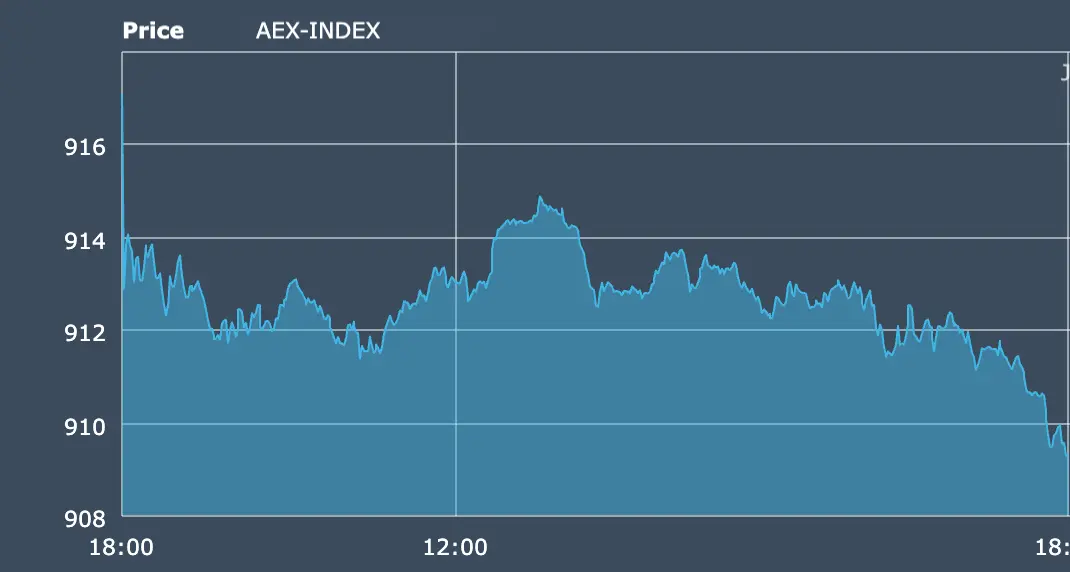The AEX closed on 909.30, down 7.80 points or -0.85%, sliding beneath a key round number it hasn’t seen since mid‑May.

Tone of the Day: Subdued Under Strain
On surface, a modest drop. Beneath it, a sense of cautious retreat. Markets began firm post‑open, touched 917 intraday highs, but every test was met with sell‑side reserve. The prevailing mood: not outright panic, but a deliberate edgedown, an investor base weary of geopolitical friction and lacking fresh confidence.
Hidden Drivers
What unsettled the desk? First, the simmering Israel–Iran conflict, now into its seventh day. Fresh strikes and Iran’s diplomatic overtures with Europe continued to unsettle oil supply forecasts, nudging Brent above $78/bbl . The result: energy‑linked sectors in Amsterdam drifted lower, reproducing a global ripple effect.
Second, central bank posture across Europe remained cautious. The Bank of England held rates at 4.25%, noting “elevated global uncertainty” and potential inflationary pressure from energy price shocks. That tone ripples across EU risk assessments, even without an ECB decision today.
Large‑cap corporate intelligence offered no new spark. While Euronext’s quarterly AEX review again yielded no changes, share‑buyback noise emerged quietly: Heineken, Signify, Aalberts, all ran repurchase plans in the past week, hinting at board-level confidence, yet failing to arrest today’s slight bleed.
What Demands Attention
Watch energy‑related equities: if Brent stays north of $78, tour operators, logistics providers, and manufacturers with thin fuel margins will feel pressure. Also monitor defensive and safe‑haven flows: gold futures edged up, often an inverse signal to risk appetite.
On the political front, any shift in EU diplomacy around Iran or a statement from the ECB addressing these dynamics could flip market structure within hours.
For Dutch Entrepreneurs
This is not day‑trading. For SME leaders, today’s dip is a structural tick, not a binary ‘sell’ or ‘buy’ flag. It’s a reminder: energy disruptions and geopolitical risk are non‑linear variables in cost projections. Entrepreneurs in logistics, food service, and mobility should reevaluate hedging practices and build adaptive procurement clauses. Innovation‑led firms should view disciplined capital buffers not as drag, but as governance resilience.
Governance Reflection
A 0.85 percent drop is not an alarm, it’s a governance trial: can structures absorb subtle stress before they crack? True foresight is not reacting to market waves, but steering through them with quiet discipline.
Co-Founder of Xtroverso | Head of Global GRC
Paolo Maria Pavan è la mente strutturale dietro Xtroverso, unendo la competenza nel compliance alla visione strategica dell’imprenditore. Osserva i mercati non come un trader, ma come un lettore di schemi—tracciando comportamenti, rischi e distorsioni per guidare una trasformazione etica. Il suo lavoro sfida le convenzioni e ridefinisce la governance come forza di chiarezza, fiducia ed evoluzione.
